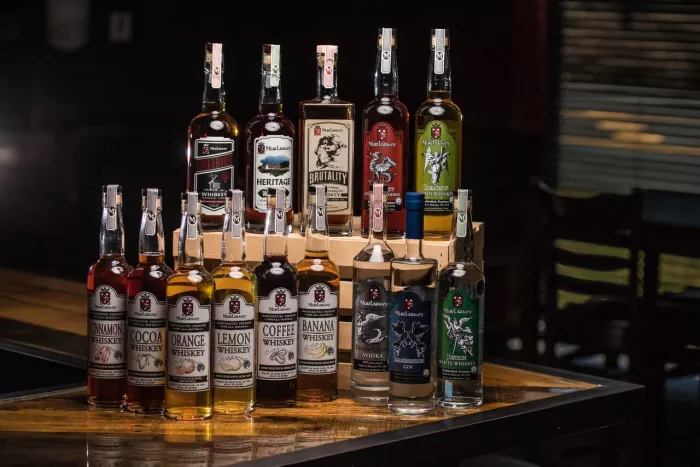Distilled spirits, often referred to as hard liquor, are the result of a centuries-old alchemical process that transforms raw ingredients into flavorful elixirs. This intricate journey involves a combination of science, artistry, and tradition, resulting in an array of spirits that grace bars and homes worldwide. In this comprehensive guide, we will dissect the process of how distilled spirits are made, from the selection of ingredients to the final bottling and aging.
The Foundation: Selecting Quality Ingredients
The journey of crafting fine distilled spirits begins with the selection of high-quality raw materials. These primary ingredients are the very essence of the final product, imparting their unique characteristics to the spirit. The choice of ingredients can vary widely depending on the type of spirit being produced.
Grains: For spirits like whiskey, vodka, and gin, grains play a pivotal role. Common options include barley, corn, rye, and wheat. Each grain brings its distinctive flavor profile and mouthfeel to the final product.
Fruits: Fruits are central to the production of spirits like brandy and fruit-based liqueurs. Grapes, apples, pears, and cherries are among the fruits that can be fermented and distilled to create these delectable libations.
Sugars: Sugars derived from sources like sugarcane, molasses, or even fruit juice are the foundation of spirits such as rum. The type of sugar used greatly influences the flavor profile, ranging from the rich molasses notes of dark rum to the light, fruity character of some agricole rums.
Mashing and Fermentation: Transforming Starches into Alcohol
Once the key ingredients are selected, the next step in the creation of distilled spirits involves breaking down complex carbohydrates into fermentable sugars. This process is known as mashing. For grains, this often entails grinding or milling them to expose the starches. These mashed grains are then combined with water to create a mash. Enzymes may be added to assist in the conversion of starches to sugars.
Fruits, on the other hand, may require crushing or pressing to extract the juices. Sugars can also be extracted from sources like molasses. In all cases, the goal is to create a fermentable substrate rich in sugars, ready to undergo the next critical phase: fermentation.
During fermentation, yeast is introduced to the mash or juice. Yeast is a microorganism that consumes sugars and produces alcohol and carbon dioxide as byproducts. This process can take several days, depending on the type of spirit being produced and the desired alcohol content.
Distillation: The Art of Separating Alcohol from Water
Distillation is the heart of the process in creating distilled spirits. It is the method by which alcohol is separated from the rest of the liquid, concentrating its flavors and increasing its alcoholic strength.
The process involves heating the fermented liquid in a still. As the liquid is heated, the alcohol vaporizes at a lower temperature than water. The resulting vapor is collected and condensed back into liquid form. This liquid, known as “distillate,” is now higher in alcohol content and carries the concentrated flavors of the original mash or juice.
Distillation is typically performed in two stages. The first run, known as the “wash distillation,” separates the alcohol from the mash. The resulting liquid, known as “low wines,” undergoes a second distillation, known as the “spirit distillation,” to further refine and concentrate the alcohol.
Ageing: Maturing the Spirits for Complexity
Not all distilled spirits undergo aging, but for those that do, it’s a critical step in the development of flavor, aroma, and character. Aging takes place in wooden casks, often made of oak. The porous nature of the wood allows for a gradual interaction between the spirit and the environment, resulting in a transformation of the liquid within.
As the spirit resides in the cask, it undergoes a series of chemical reactions. Compounds from the wood, such as vanillin and tannins, infuse the spirit with flavors like vanilla, spice, and oak. Additionally, the spirit may absorb or lose some of its water content, influencing its final alcohol concentration.
Aging periods vary widely depending on the type of spirit and desired flavor profile. Whiskies, for instance, often benefit from several years of aging, allowing for a complex interplay of flavors. Meanwhile, some lighter spirits like gin may not require extensive aging and instead rely on botanicals for their character.
Blending and Bottling: Achieving Consistency and Quality
After aging, the distilled spirits may undergo additional processes to achieve the desired flavor profile and consistency. This can involve blending spirits from different casks or batches. Master blenders carefully select and combine different expressions to create a harmonious and balanced final product.
Once the blend is perfected, the spirits are filtered to remove any impurities or sediments that may have developed during aging. They are then diluted to the desired bottling strength, using water or sometimes other spirits. This step allows for precise control over the final alcohol content.
Finally, the spirits are bottled, sealed, and labeled for distribution. The packaging and labeling reflect not only the brand’s identity but also the spirit’s category, age, and any unique characteristics it may possess.
Conclusion:
The journey from raw ingredients to a meticulously crafted bottle of distilled spirits is a testament to human ingenuity, tradition, and a deep appreciation for the art of flavor. Each step in the process, from ingredient selection to blending and bottling, contributes to the distinct character of the final product.


